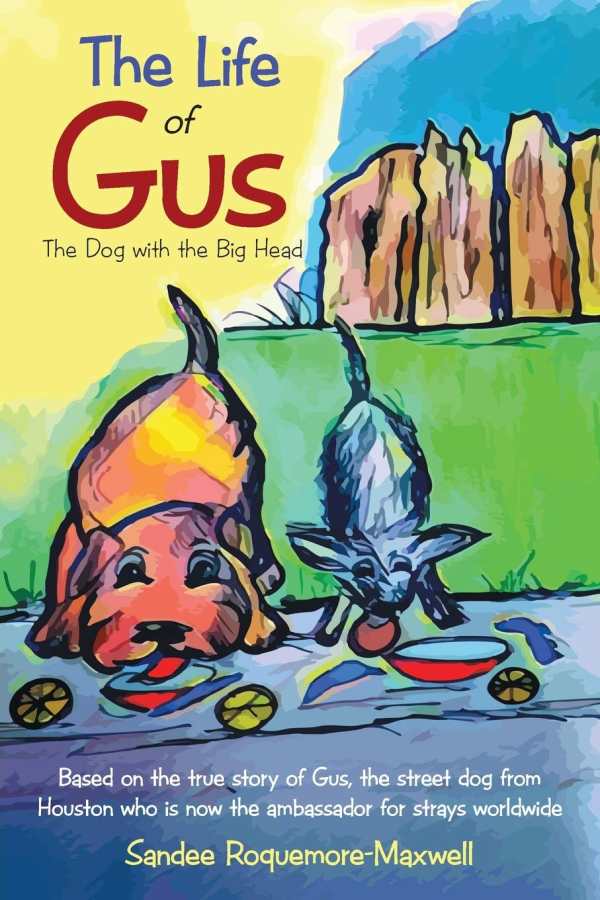The Life of Gus
The Dog with the Big Head
Through its hopeful story about a rescue dog who found his place, The Life of Gus humanizes the plights of stray animals.
Based on a true story, Sandee Roquemore-Maxwell’s heartwarming The Life of Gus is about a dog who was abandoned and rescued.
Gus didn’t always have to fight for survival. He used to be called Rex and have a house of his own with a loving boy, Timmy, to take care of him. But Timmy abandoned Rex when his family moved. After his abandonment, the dog endured loneliness, the cold, starvation, and sickness, all while sporting a shoelace collar that was too tight.
Rex’s sorry state was enough to attract the attention of passersby, prompting a concerned citizen to follow him and rescue him. At the veterinary clinic, he was given the name Gus and became somewhat of a star. The story works toward an ending in which Gus expresses hope that his personal experience will inspire people to help other strays—with adult supervision, of course.
The straightforward but bittersweet story follows Gus from his puppyhood into the present. Creative liberties help in explaining how and why the dog was abandoned, inspiring sympathy and compassion for him. His situation on the street is sad. Even his small victories are marred by the harsh reality of the situation, as when he’s starving and finds food, though it is from the garbage, and he eats too much and gets sick.
Gus narrates, covering these events and sharing his feelings about them, from the sadness he feels when his owner becomes neglectful to the joy that fills him when he finds a companion. His point of view is sympathetic and inspiring.
Peggy Bordelon’s illustrations are hand-sketched and minimalist, acting as snapshots of events in the story. They include both daydreams and difficult moments, and there’s one per chapter. Their sparing inclusion tends to underscore the book’s bleak tones, especially since the images are rough, monochromatic, and sobering. Happier memories are less often featured. Because they are few and far between, the illustrations complement, rather than distract from, the story.
The text is most often straightforward, but also includes high-level words like “hobbled” and “scrounged” to pique audience interest. More often than not, though, the book’s word choices are utilitarian. There are few descriptive passages; more focus is placed on describing what’s happening in direct terms.
Through its hopeful story about a rescue dog who found his place, The Life of Gus humanizes the plights of stray animals.
Reviewed by
Ian Dailey
Disclosure: This article is not an endorsement, but a review. The publisher of this book provided free copies of the book and paid a small fee to have their book reviewed by a professional reviewer. Foreword Reviews and Clarion Reviews make no guarantee that the publisher will receive a positive review. Foreword Magazine, Inc. is disclosing this in accordance with the Federal Trade Commission’s 16 CFR, Part 255.

